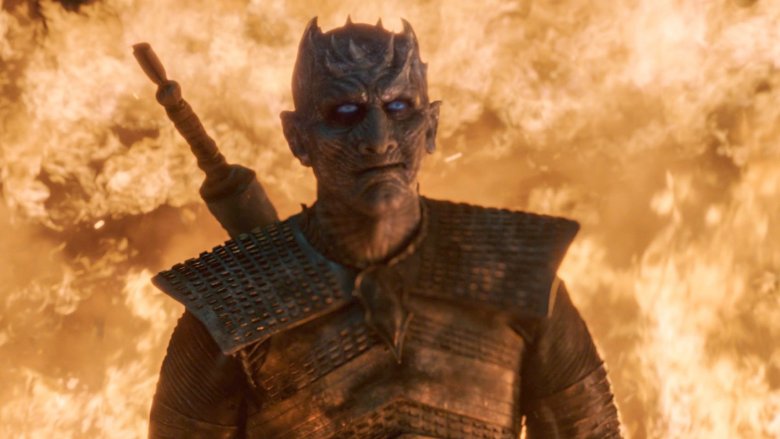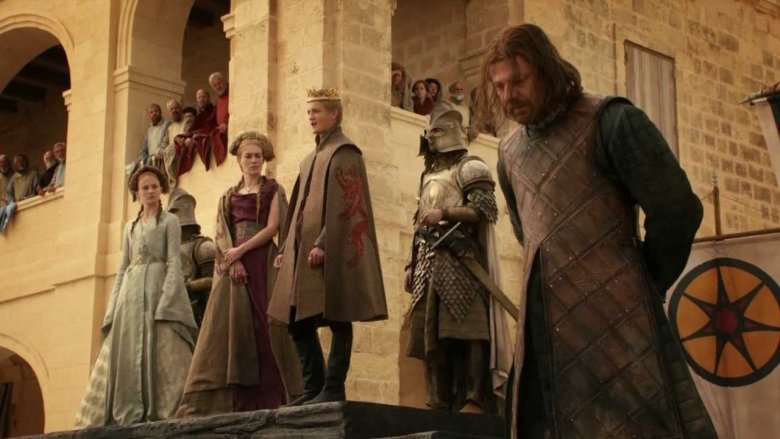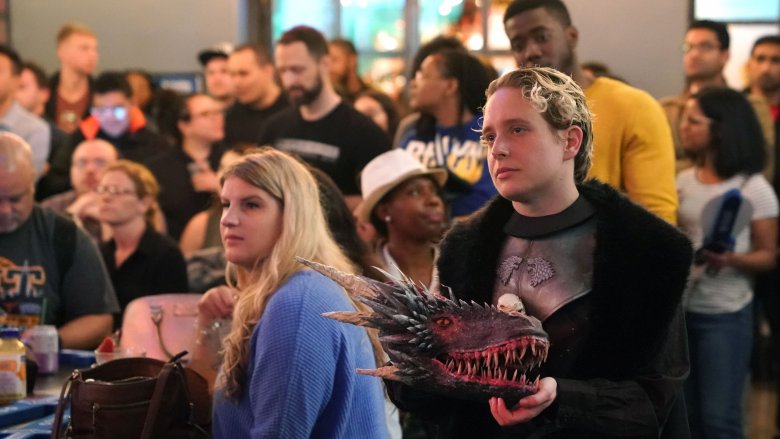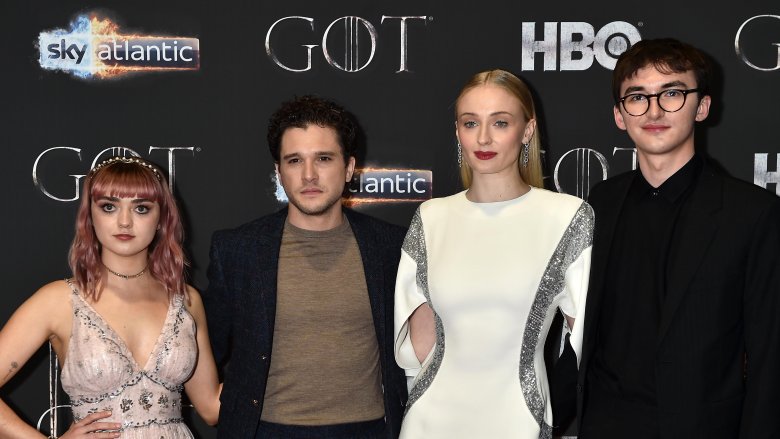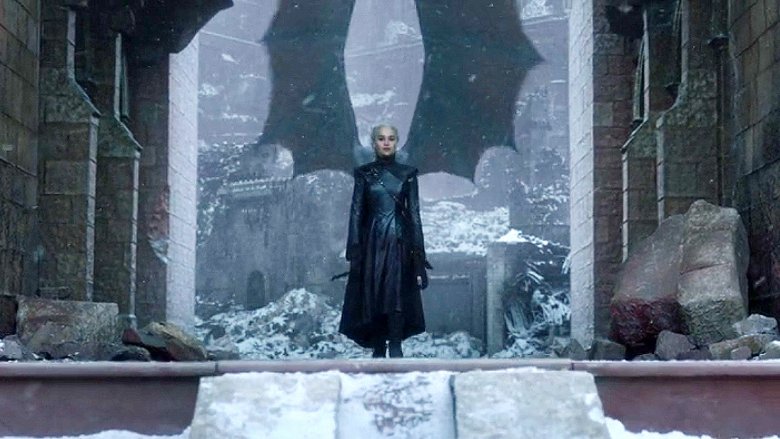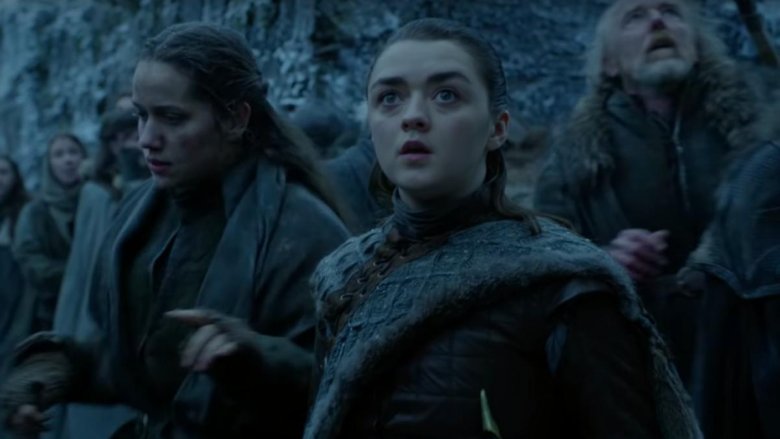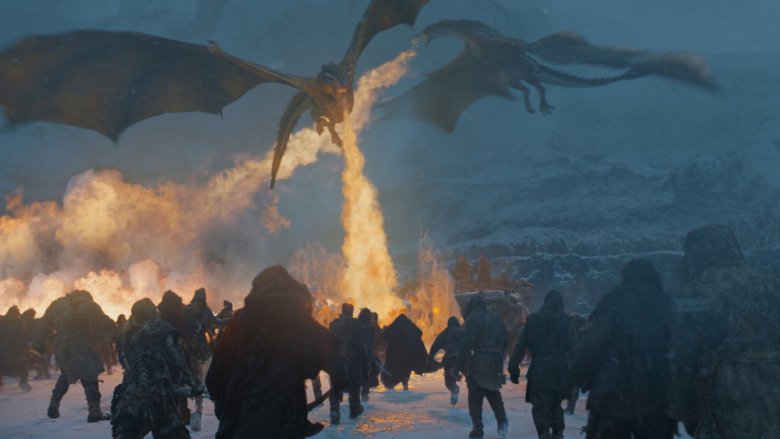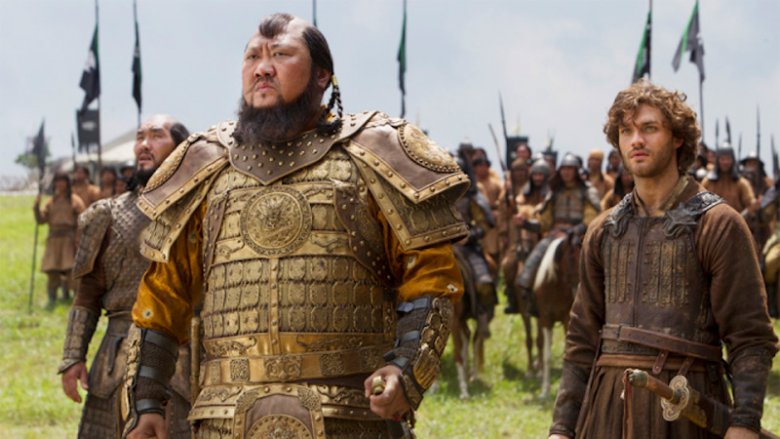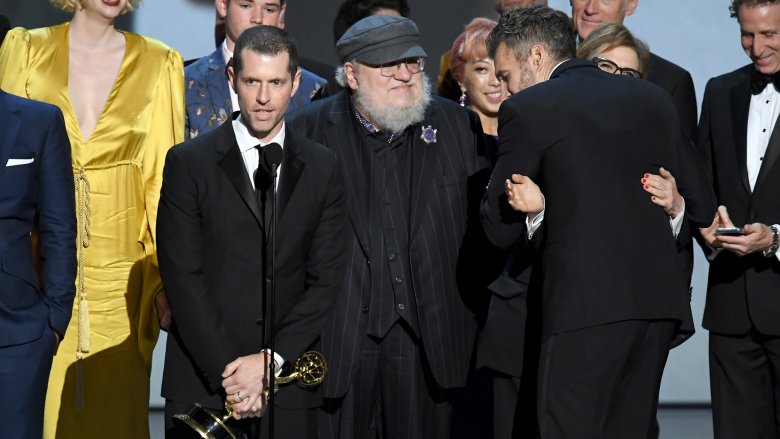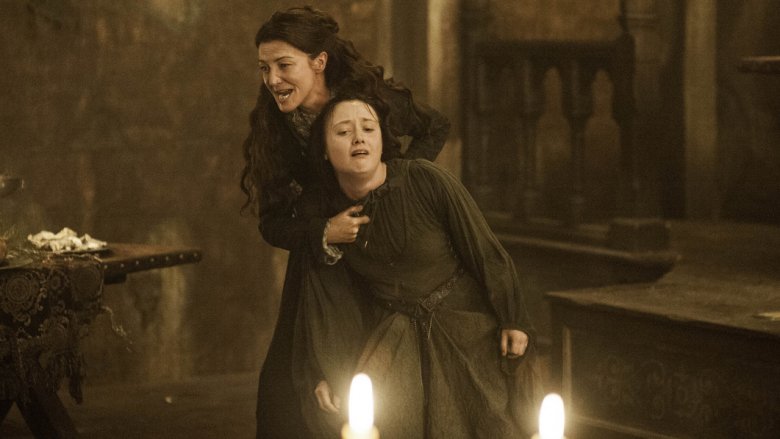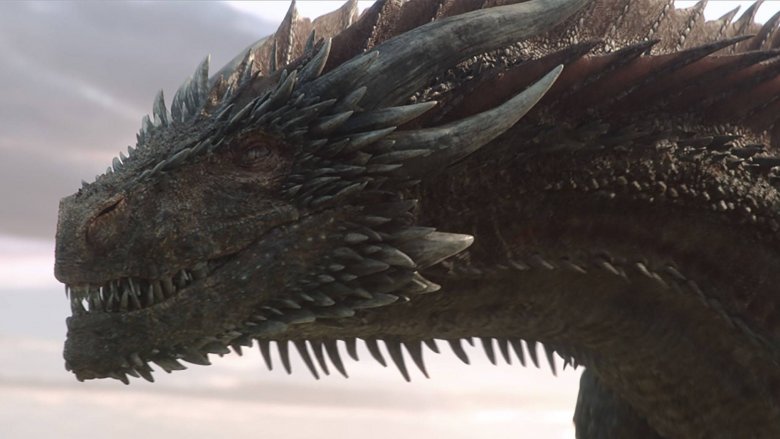How Game Of Thrones Changed TV And No One Noticed
Every now and then, a new phenomenon hits television — and that word certainly applies to Game of Thrones, the massive HBO series based on the original series of books by George R.R. Martin. Over eight seasons, Game of Thrones gave its audiences political intrigue, steamy scenes, outstanding performances and impeccable direction, and despite a final season that fell below some fans' expectations, its looming legacy certainly won't be forgotten any time soon.
Game of Thrones provided unforgettable moments, near-perfect episodes, and stunning seasons throughout its run, but as it continued, it also changed television in many ways — some that fans likely noticed, but also some subtler ways that flew slightly under the radar. From subverted expectations to a new generation to record-breaking ratings and beyond, here's a look at how Game of Thrones changed television without anybody noticing. Spoilers to follow for the entire series!
It subverted expectations right away
As Game of Thrones started its run, it seemed to have a clear main character that viewers were supposed to rally behind, and that character was Ned Stark, played perfectly by Lord of the Rings' Sean Bean. As the honorable and just patriarch of the highborn Stark family, Ned, the Warden of the North, was lured away from his family and life at Winterfell to head to King's Landing, the capital of Westeros, to become the Hand of the King. In doing so, he splinters the Stark family across the map of Westeros, leaving his wife and sons behind as he and his daughters make a new home in King's Landing.
However, things take a turn for the worse when Ned discovers that the heirs to the throne aren't actually the children of King Robert Baratheon, but a bunch of incest-borne Lannisters, and in the ninth episode of the first season, "Baelor," he confesses to his "crimes" in front of the entire populace of King's Landing, ultimately losing his head anyway. Fans of the books saw this moment coming, but for those who had just started with the show, it remains one of the best moments on Thrones, perfectly setting up expectations before yanking the rug out from under the entire audience.
It broke viewership records
HBO, which has marketed itself as a network that transcends television since it got into original programming, rarely wants for viewers; with flagship dramas like The Sopranos and The Wire still ranked as some of the best television shows of all time and game-changing comedies like Sex and the City leading the charge, HBO enjoyed a whopping 17-year run as the most nominated network in Emmys history (though it was felled by Netflix in 2018). Even with the advent of streaming services and more prestige television than ever, HBO is still making waves with hits in every category, from John Oliver's political Last Week Tonight to the sweeping, soapy Big Little Lies to Chernobyl, the last of which recently became IMDb's highest rated show of all time.
Even for a network that was already in the business of setting records only to smash them, Game of Thrones still changed the game, becoming one of the biggest shows in television history and a flagship series for HBO. In 2017, Thrones broke records for the network by attracting over 12 million viewers to a single episode, but even that was surpassed by the finale in 2019, which set new records for both the show and HBO. The network is developing several spinoffs set in the Thrones universe, and after this success, it's easy to see why.
It created a new generation of stars
Thrones started out with plenty of established and well-known actors in leading roles. From Sean Bean (who made a name for himself in the Lord of the Rings franchise) to Peter Dinklage (who was already recognizable from films like The Station Agent and Elf), the show featured plenty of familiar faces.
However, in addition to this huge roster of stars, the show cast a large number of younger actors, most of whom were total unknowns. Both Emilia Clarke and Kit Harington booked their leading roles as Daenerys Targaryen and Jon Snow, respectively, shortly after graduating from drama schools in London (Clarke booked the part just one year after graduation, and Harington's only other professional credit was a West End production of War Horse), and some of their new co-stars were even younger. Sophie Turner, who played Sansa Stark, and Maisie Williams, who played the youngest Stark daughter, Arya, were only 14 when they began their roles, and Isaac Hempstead Wright, who played their brother Bran, was only 11. As this young cast grew up on Thrones, they snagged bigger starring roles in other franchises (Turner, in particular, graduated to lead film roles with 2019's Dark Phoenix), became bona fide celebrities, hosted Saturday Night Live, and forged new careers on the basis of Thrones alone, joining the next generation of stars.
It made TV even more cinematic
When it comes to spectacle, huge performances, and enormous set pieces, film has always reigned supreme. From older films like Ben-Hur to more recent epics like Titanic and Lord of the Rings, movies have always been afforded the budgets and scope to create entirely new worlds, invent languages, and stage enormous action sequences, but that opportunity has largely been absent from television. Even prestige dramas like Breaking Bad and Mad Men, while beautifully shot, remained relatively modest in scope, but all of that changed with Thrones.
Easily the most technically ambitious show in television history, Thrones' filming spanned continents, shooting in exotic locales like Iceland and Croatia as it gave fans bigger and bigger sequences; while low budgets during season one prevented the showrunners from shooting battle scenes, that all changed with season two's "Blackwater," which led to even more expensive sequences down the line. Season six's "Battle of the Bastards" set new standards, and in the show's final season, the Battle of Winterfell ended up becoming the longest ever shot for television or film. For years, television couldn't compete with film; Thrones proved it was not only possible, but could yield some pretty unforgettable results.
Its budgets smashed records
Even though it probably seemed like a sprawling, dense fantasy series stood little chance of becoming HBO's biggest hit of all time, shortly after Thrones' premiere in 2011, the network clearly realized that they had a massive success on their hands and got to work making sure that the showrunners had as much money as they needed. Much of the added expense went to battle sequences, with the Battle of Blackwater Bay bumping the show up to $8 million for the episode, but even then, showrunners David Benioff & D.B. Weiss reportedly had to fight quite hard for this uptick.
However, by the time the show reached its final season in 2019, it was breaking records once again with a budget increase that brought each episode to a whopping $15 million — and some episodes, like the one featuring the Battle of Winterfell, may have even surpassed that. In recent years, $10 million budgets have been doled out more commonly (with one notable example being Netflix's smash hit The Crown), but a budget for the final season that reached $90 million is pretty unprecedented, making it clear that HBO would spare no expense when the time came to finish off their signature show. With massive budgets reportedly already set for the spinoffs, it looks like HBO has few regrets.
It made fantasy more accessible
Fantasy sometimes gets a bad rap. Aside from mainstream success stories like Harry Potter or the Lord of the Rings series, it's not super common for a fantasy series to become a worldwide pop culture phenomenon. Though Martin's books were certainly popular in their own right, the Game of Thrones name wasn't nearly as popular as it became once the show started airing, and it's important to understand why this one struck gold where others have floundered and even failed.
This genre can sometimes feel overly complicated or inaccessible — even some of the stars of the show, including Peter Dinklage, had to be convinced to take their roles — but by drawing on timeless elements like sex, political intrigue, and family drama into the show, Thrones perfectly balanced their dragons, ice zombies, face-shifters, and giant wolves while still remaining rooted in a realistic realm that viewers could not only understand, but even find relatable. This is thanks in large part to the show's exceptional performances; from Dinklage's charming and heartbreaking turn as Tyrion Lannister to Sophie Turner's dramatic and earned evolution as Sansa Stark, the show always felt rooted in human problems and human drama, welcoming non-fantasy fans to the party.
It inspired plenty of medieval dramas & fantasies
As Thrones continued to change what people thought about fantasy — and redefine what television shows were capable of — audiences and producers started to realize that perhaps this phenomenon could be repeated beyond HBO's spinoffs. For years, different networks and studios have tried to recreate Thrones, with varying results. From Michael Bay's Black Sails to Netflix's Marco Polo and History's Vikings, several series have tried to capture the medieval feel of Thrones, and while some fared well critically, others were recognized as the ripoffs they were.
Now that Thrones has ended, however, there's a lot more in the pipeline, with eager producers and viewers wondering what could be "the next Game of Thrones." For its part, HBO is trying to keep the fantasy vibe going with another popular adaptation, His Dark Materials, and Amazon is getting into the game with a Lord of the Rings adaptation. There's no shortage of upcoming shows that could prove to be the next Thrones... or slink quickly off the airwaves.
It moved past its source material
For the first five seasons of the show, Game of Thrones stuck pretty faithfully to its original script — the A Song of Ice and Fire Series by George R.R. Martin, which is currently comprised of five books (the sixth, The Winds of Winter, has redefined "long-awaited sequel"). Named for the first book in the series, Thrones tackled all of its biggest moments, including Ned Stark's execution, the Red Wedding, the doomed wedding of Joffrey Baratheon, and Jon Snow's death, before moving past its source material in season six.
Season six came on the heels of a particularly brutal fifth season, which contained some of the most hard-to-watch scenes in the series. Though it featured some of the show's most feminist moments, many critics and fans believed that once the show could no longer follow Martin's strict plot map — even though he was a frequent consultant on the show — the quality suffered, but whether or not it was truly able to hold its own against Martin's books, it still marks a turning point for adaptations. Source material is almost always finished by the time adaptations are filmed, so for Benioff & Weiss to even attempt to move beyond Martin's books while still maintaining the story was a massive feat, and one that could help establish a new paradigm for TV.
It set a new standard for shock value and violence
"Shock value" will always be synonymous with Game of Thrones. From the first season's explosive ending when Ned Stark died and Daenerys was reborn from a burning pyre with three baby dragons, the show set enormous expectations, and more often than not, it surpassed them. Viewers were traumatized by the Red Wedding, horrified by Hardhome, and blown away by the siege of King's Landing, but they could also cheer as Arya changed faces to take down Walder Frey, as Jon and Sansa defeated Ramsay Bolton at the Battle of the Bastards, or as the Night King met his defeat at the Battle of Winterfell.
That being said, this shock value wasn't always the show's most valuable or even enjoyable quality. Throughout its run, it pushed new boundaries for what viewers could withstand; the Red Wedding was bad enough, but watching a child be burned at the stake or watching a young woman endure sexual violence on her wedding night (just one of the show's many negative instances of assault as a plot device) felt like too much. Even so, Thrones set new standards for shock value, and if future ambitious showrunners can learn something from its triumphs and its failures in equal measure, it can only improve the television landscape.
It set an extremely high bar for CGI while staying grounded
Special effects can be one of the trickiest parts of any television show or film; with new technology constantly breaking, it's easy for CGI to end up looking dated within a few years. One of the most difficult elements of the show to create was Daenerys' three dragons, which grew from the size of bats to massive, unimaginably dangerous creatures that hugely factored into the show. Depicting them (as well as finding ways to film scenes between them and the show's human actors) was incredibly difficult, requiring technology and innovative CGI to make sure they looked as real as possible.
However, the contrast to the show's often intricate CGI came in its filming locations; rather than using an overabundance of green screens, showrunners used some of the world's most naturally beautiful locations to serve as backdrops for this fantastical world. From the orange-thatched roofs of Dubrovnik, Croatia to the wilderness of Iceland and the castles of Northern Ireland, the show rooted mythical creatures in very real places, keeping the most fantastical elements grounded no matter what.
